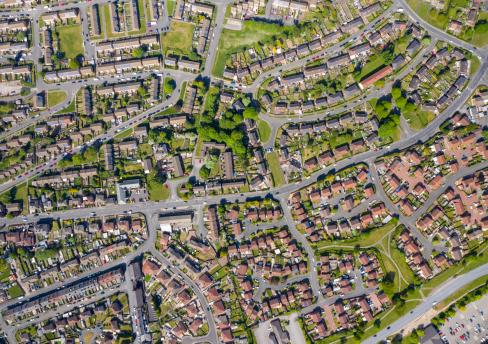
Commercial property has been a recognised as an asset class for almost 50 years. Despite this, landlord and tenant disputes continue to generate a steady stream of litigation in the Court of Session. The latest decision - Kilmac Properties Limited v Tesco Stores Limited [2021] CSOH70 - gives helpful guidance on the question, who is responsible for what repairs during a commercial lease and at termination?

The Common Law position
As a matter of common law, a tenant is responsible for ordinary repairs, the landlord for extraordinary repairs. However, the court has never provided a detailed explanation of what extraordinary repairs are. While this has, in itself, been a source of dispute, generally, ordinary repairs cover what the word implies; but extraordinary repairs include more catastrophic failures, latent and inherent defects and repairs associated with long term deterioration.
However, a tenant can become responsible for extraordinary repairs where it fails to attend properly to ordinary repairs. For example, if a tenant ignores minor leaks over many years, it may become responsible for a full roof replacement.
In a well-drafted commercial lease, these uncertainties should never arise. The drafter will make responsibilities clear, often by using express terms to make all repairs the tenant’s responsibility. However, if no express language is used, is there still scope to argue that liability for all repairs are the tenant’s responsibility? This was the question addressed in the Kilmac Properties decision.
The Kilmac case involved a lease of property in Monifieth entered into in November 1977 and which ran until 2019. The Tenants' obligations included the following:
"THE TENANTS HERBY AGREE AND DECLARE THAT with regard to the maintenance and use of the Premises they shall implement and fulfil the following conditions, namely:-
(I) at all times throughout the period of this Lease they shall at their own expense maintain and keep the structure and fabric of the Premises, both inside and outside, including all additions thereto and the fixtures and fittings thereof and the water and sanitary apparatus, sewers, drains, pipes and pertinents thereof in good and substantial repair, condition and decoration, damage by fire and other risks against which the landlords have insured excepted…."
At the expiry of the Lease, a terminal schedule of dilapidations was served on the Tenants requiring repairs running to several hundreds of thousands of pounds. The Tenants maintained that the bulk of these costs were extraordinary repairs and should remain with the Landlords.
The Landlords' Argument
The landlord made three main arguments that the Lease required the Tenants to deal with extraordinary repairs:
- the scope of the repairing obligation was extremely wide: it included an obligation in respect of “the structure and the fabric of the premises both inside and outside”. A repairing obligation of such breadth was not consistent with one which is limited to ordinary repairs.
- the clause contained a specific exclusion from the repairing obligation of “damage by fire and other risks against which the Landlords have insured”. This exception implied that the tenant was responsible for all other extraordinary repairs.
- the Lease contained no express right of access for the Landlords to carry out extraordinary repairs, implying these were the tenants’ responsibility.
These arguments were rejected by the Court. The following points were highlighted:
- Although relatively wide, the repairing clause makes no reference to the tenant agreeing to attend to the more onerous obligation of rebuilding (or renewing) or to undertaking what would normally be the obligation of the landlord for repairs.
- It does not identify any of the relevant features of damage giving rise to extraordinary repairs, such as the origin of the damage, or its nature or extent. For example, there is no reference to repairs in respect of decay or deterioration over time, or latent defects.
- There was no sufficiently clear pointer away from the tenant being liable for only ordinary repairs. The wording of the clause in this Lease was not sufficient to displace the common law position.
- The Court also had regard to the fact that extraordinary repairs may be very significant in terms of work and costs and that this was a lease covering a period in excess of 40 years when the potential liability of the tenant for extraordinary repairs would have been a serious matter for the parties. Clear language displacing the common law position would be expected in those circumstances.
- The Landlords' insurance and access arguments were rejected as insufficient to transfer liability for the repairing costs.
The Court determined that in interpreting the whole wording of the clause and the full Lease, the absence of sufficiently clear language imposing a liability for extraordinary repairs resulted in the Tenants' liability being restricted to ordinary repairs.
Conclusions
- Drafters will take great care to ensure liability for repairs is transferred to the tenants, but particularly in older agreements, it is worth checking that wording
- Where there is no clear wording to the contrary, the Court appears to enforce the common law position – where the tenant is only responsible for ordinary repairs
The content of this webpage is for information only and is not intended to be construed as legal advice and should not be treated as a substitute for specific advice. Morton Fraser LLP accepts no responsibility for the content of any third party website to which this webpage refers. Morton Fraser LLP is authorised and regulated by the Financial Conduct Authority.









